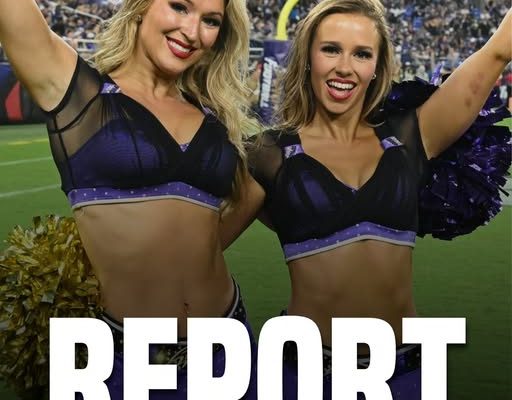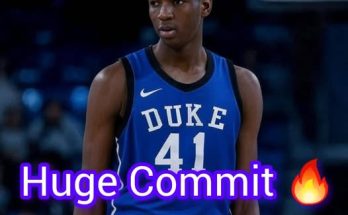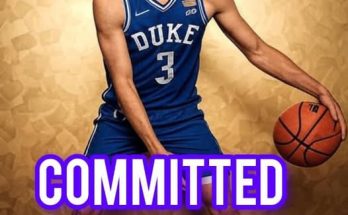The Baltimore Ravens have long stood out in the NFL for many reasons, ranging from their fierce defensive reputation on the field to their commitment to embracing innovation and inclusivity off the field. In 2025, the organization made another historic stride by announcing that their cheerleading squad will include a record-breaking 19 male members. This marks the largest male presence ever on an NFL dance team and solidifies the Ravens as leaders in creating a more dynamic and co-ed cheerleading culture within professional football. For years, NFL cheerleading has been seen largely as a domain dominated by female dancers who bring energy, choreography, and visual spectacle to games. However, the Ravens have embraced a different tradition, one that has slowly gained traction across the league: the integration of male stunt performers and athletes who bring a completely different element of athleticism to the field. By including men who specialize in lifts, flips, and acrobatics, the Ravens have built one of the most exciting and multifaceted cheerleading squads in professional sports. This year’s record number of male cheerleaders is not just a symbolic achievement; it reflects the growing popularity of co-ed cheer programs and the recognition that male and female athletes together can elevate the art and athleticism of cheerleading.
When people think about NFL cheerleading, they often imagine synchronized dance routines performed by women on the sidelines, designed to pump up the crowd and keep the stadium energy high. While this is still true for many franchises, the Ravens have consistently gone a step further by incorporating elements of competitive cheerleading into their performances. With men working as bases and spotters, the team is able to execute lifts, pyramids, and flips that rival the performances seen in national cheerleading competitions. These high-flying stunts not only thrill fans but also demonstrate the athletic rigor and training required to be part of the squad. The addition of 19 men for the 2025 season means that the Ravens will have greater flexibility to attempt more ambitious stunts, creating a show that blends dance, gymnastics, and acrobatics into something truly unique in the NFL landscape.
For the men themselves, being part of the Ravens cheerleading program is both an opportunity and a challenge. Many of them come from backgrounds in competitive cheerleading, gymnastics, or acrobatics, where strength, timing, and precision are critical. Unlike traditional dance-focused squads, these athletes spend much of their time working on partner stunts and group lifts that require trust, coordination, and intense physical training. Lifting a teammate into the air or catching them after a flip is no small feat, and it highlights the fact that cheerleading at this level demands as much athleticism as any sport on the field. For the 19 men who made the squad, this season represents not only personal accomplishment but also the chance to perform on one of the largest stages in sports and prove that cheerleading is about far more than dance—it is about teamwork, strength, and showmanship.
The Ravens’ decision to expand the male presence on their cheer team also speaks to broader shifts happening within professional sports. Cheerleading has often been criticized for outdated stereotypes that frame it as mere sideline entertainment. Yet over the years, more teams and fans have come to appreciate the complexity and athletic demands of the role. With male athletes joining in larger numbers, the image of NFL cheerleading is evolving. Instead of being seen as a support act, cheerleaders are increasingly viewed as performers and athletes in their own right. This mirrors the larger movement in society toward inclusivity and breaking gender norms in sports, where opportunities are expanding for men and women alike to showcase their skills in areas once restricted by tradition. The Ravens, by breaking records with their 2025 roster, are now at the forefront of this cultural evolution.
From a fan perspective, the announcement has been met with significant excitement. Ravens games are already known for their electric atmosphere at M&T Bank Stadium, and the enhanced cheerleading squad only adds to that reputation. Supporters are looking forward to halftime shows and sideline routines that feature daring stunts and powerful performances, adding another layer of entertainment to the NFL game-day experience. For families and young fans, seeing men on the sidelines alongside women also carries an important message: that cheerleading is a space for everyone, regardless of gender. This kind of representation matters deeply, especially for boys who may have grown up loving cheer and gymnastics but felt there was little room for them in mainstream sports culture. By putting 19 men in prominent roles, the Ravens are showing that talent, passion, and hard work are what define an athlete—not outdated notions of gender.
The history of male cheerleaders in the NFL is a fascinating one. While men have been involved in collegiate and competitive cheer for decades, professional football teams have been slower to adopt co-ed models. Some of the earliest male cheerleaders appeared in the late 1970s, but their presence remained rare and inconsistent. Over the years, a handful of franchises experimented with including men as stunt partners, though many teams reverted to all-female squads due to tradition and market perceptions. The Ravens, however, were one of the first to consistently embrace co-ed cheer, maintaining a squad where men were valued not just for their support but for their athletic contributions to the overall performance. This commitment over time has built a culture that not only accepts but celebrates male participation, making the 2025 milestone a natural progression of their philosophy.
Of course, the rise of male cheerleaders in the NFL has not come without challenges or criticism. There have always been skeptics who question whether male cheerleaders belong in professional football, often reflecting outdated ideas about masculinity and gender roles. Yet time and again, the performances themselves have silenced critics. When fans see the intensity, coordination, and athletic ability required to pull off advanced stunts, they begin to understand that cheerleading is a sport in its own right. The record-setting Ravens squad this year may once again spark debate, but it will also provide a powerful counterargument simply through the quality of its performances. By excelling on the field and entertaining thousands of fans each week, these athletes redefine what cheerleading means in the NFL and beyond.
This announcement also raises intriguing possibilities for the future of cheerleading in professional sports. Will other NFL teams follow the Ravens’ lead and embrace larger co-ed squads? Could we see a time when male and female cheerleaders share equal representation across the league? If the Ravens’ success is any indication, the answer may very well be yes. With the right mix of skill, showmanship, and inclusivity, co-ed cheerleading offers an unmatched form of entertainment that enhances the game-day experience. In an era when sports organizations are increasingly seeking ways to connect with younger audiences and embrace diversity, the Ravens’ model could prove to be influential. Their bold step in 2025 might become the standard in years to come.
Beyond the NFL, this development resonates with the broader cheerleading community, especially at the high school and college levels where co-ed cheer has long been established. For young athletes in those programs, seeing a professional team like the Ravens celebrate male participation at record levels sends an encouraging message. It reinforces the idea that cheerleading is not limited to one gender and that the highest levels of performance are open to anyone willing to commit to the discipline. This alignment between grassroots cheerleading and the professional stage creates a natural pathway for male cheerleaders to pursue opportunities at every level, fostering growth and legitimacy for the sport as a whole.
Ultimately, the Baltimore Ravens’ record-breaking 2025 cheerleading squad is about much more than numbers. It represents progress, inclusivity, and the continued evolution of professional cheerleading. With 19 men joining their ranks, the Ravens are not just making history; they are reshaping perceptions of what an NFL cheer team can be. They are demonstrating that cheerleading is a platform for athleticism, artistry, and community, one that transcends stereotypes and embraces diversity. For the athletes themselves, it is an opportunity to shine on one of the biggest stages in sports. For the fans, it promises an unforgettable game-day experience filled with energy, stunts, and spirit. And for the league as a whole, it sets a precedent that may influence the future of NFL cheerleading for years to come. In the end, the Ravens’ bold announcement is a reminder that progress often comes from those willing to lead—and in 2025, Baltimore is leading the way.



